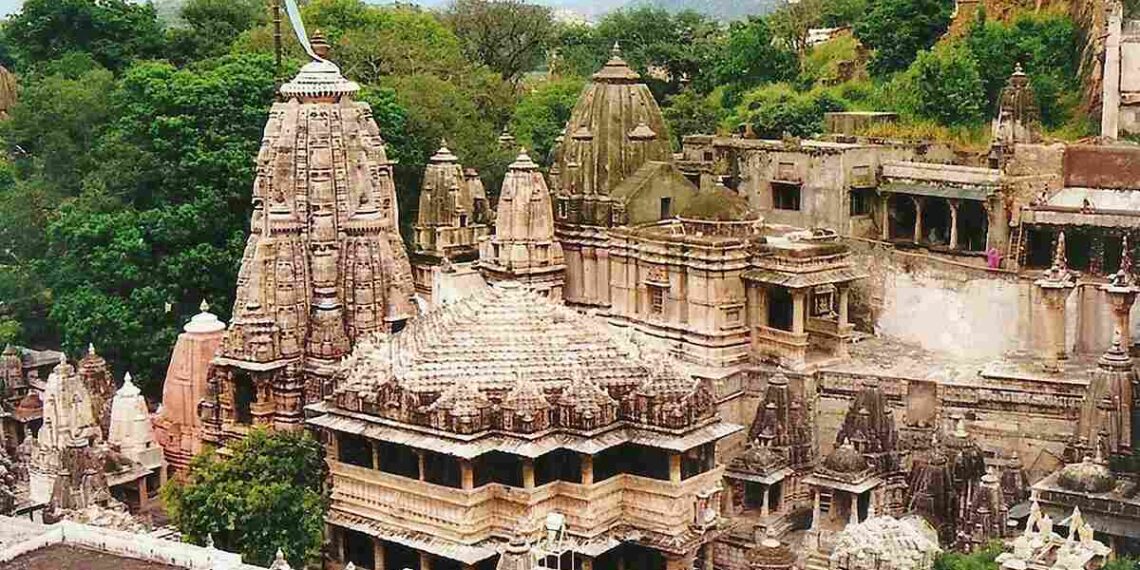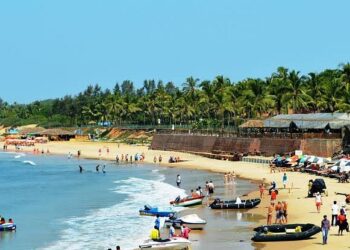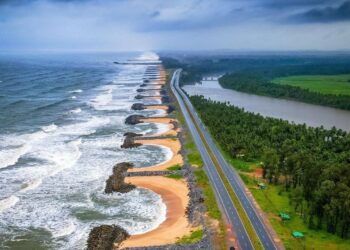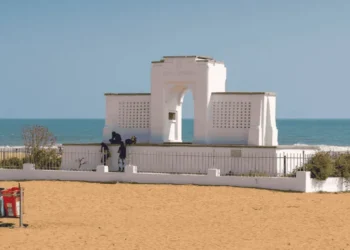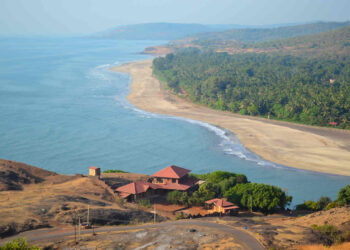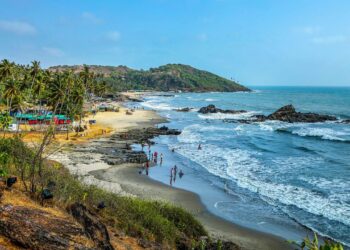The Eklingji Temple in Kailashpuri, 22 kilometers from Udaipur, Rajasthan, is a divine temple dedicated to Lord Shiva. Nestled in low hills by a small stream, it’s the spiritual center of Mewar’s faith. Eklingji Shiva is believed to be the ruling god ( Kula devata ) of Mewar Princely State while the Maharana of the Royal dynasty rules as his Dewan(Minister). As Udaipur district’s key religious site, it pulls in devotees from all over India. This guide lays out clear facts about the temple’s past, its structure, its worship, and how to visit the temple.
History of Eklingji Temple
The Eklingji Temple was built in 734 AD, built by Bappa Rawal, the warrior who founded Mewar’s kingdom. Made to honor Shiva as Eklingji, the “one true linga,” it became the guiding star for Mewar’s kings, who called themselves Shiva’s keepers. A stone slab from the 900s, carved near the gate, names Bappa’s vow to raise a shrine after a holy vision. Invaders broke parts of it, but Rana Raimal rebuilt it in the 1400s, adding stone and silver. Rana Kumbha gave walls to shield it, and Rana Pratap left gold after battles, as temple records show. The Shri Eklingji Trust, run by Mewar’s royal family, looks after the temple now. Hundreds visit the temple daily, and it can reach to tens of thousands during Shravan’s big festivals.
Architecture of Eklingji Temple
The temple sits on 2.5 acres in Kailashpuri, hugged by hills and a stream to the west. Built in the old Nagara style, it has a 50-foot granite tower with a sharp top. The main room, 10 meters by 10 meters, holds a 4-foot black marble linga with four faces. Smaller shrines for Ganesha, Parvati, and Kartikeya, each 4 meters wide, line a stone yard of 3000 square meters, where festival crowds gather. A 7-meter gate with carved elephants opens to a silver door showing Shiva’s trident, given by Rana Sangram Singh in the 1500s. A 15-meter stone path leads to the stream for holy dips.
Sculptures and Carvings
The temple’s core is its 4-foot four-faced Eklingji linga, cut from one black marble block in the 700s. Each face of the linga, facing a different way, is worshipped with bilva leaves and sandal paste from priests. A 3-foot silver Nandi bull, marked with lotus shapes, sits out front. Side shrines have 2-foot stone statues of Ganesha and Parvati, made by Mewar workers. Wall panels, 1 meter by half a meter, show Shiva dancing or fighting demons, painted red and gold, though the colors are fading. The silver door, from the 1500s, has carvings of Shiva’s kin.
Rituals and Worship
The Eklingji Temple is Udaipur’s main spot for Shiva worship, especially during Maha Shivratri (February/March), Shravan Mondays (July/August), and Kartik Purnima (November). Known as Mewar’s divine king, Eklingji blesses devotees with strength and calmness. Priests from Mewar’s Brahmin families do daily pujas, starting with abhishekam—pouring milk, water, and honey on the linga, then adding bilva leaves. Noon brings rice, dal, and kheer, shared as prasad. On Shivratri, the linga wears a silver snake crown, and 1000 oil lamps light the yard. Shravan fairs, old since the 1400s, bring Mewari songs and Ghoomar dances. The Mewar royal family also joins big pujas, worshipping Shiva as their ruler.
Things to Do at Eklingji Temple
Join Pujas: Take part in rituals, especially in Shravan, to see Mewari prayers and get prasad.
See the Temple: Look at the granite tower, silver door, and streamside path; the old walls are good for photos.
Walk the Grounds: Stroll the garden and hills, where peacocks roam and small shrines hide.
Visit Nearby Spots: Check the Saas Bahu Temples (20 km), old Vishnu shrines with fine carvings, or City Palace (22 km), a Mewar museum.
Try Local Things: Buy bilva leaves or eat dal-bati at stalls, good for tasting Mewar’s food.
Visiting Information for Eklingji Temple
How to Get There
The temple is in Kailashpuri, 22 kilometers from Udaipur, with several travel options.
By Plane: Maharana Pratap Airport in Udaipur, 24 kilometers away, links to Delhi (1.5 hours, ₹3000–8000) and Mumbai (2 hours, ₹4000–10000). Taxis or buses to Kailashpuri take 40 minutes.
By Train: Udaipur Railway Station, 22 kilometers away, connects to Delhi (7 hours, ₹150–600) and Jaipur (5 hours, ₹100–400) via trains like the Mewar Express. Taxis or autos to the temple take 30 minutes.
By Road: NH-48 joins Kailashpuri to Udaipur (22 km, 30 minutes) and Jaipur (380 km, 6 hours). Buses cost ₹30–100; taxis cost ₹500–1500. Autos run for ₹50–100. Parking is available.
Best Time to Go
November to February, with cool air (10–25°C), is best. Shivratri and Shravan draw big crowds—20,000 at peak, per trust logs. Early visits are calm. Summers (April–June, 25–40°C) are hot while monsoons (July–September) bring rain, making roads tough.
Rules for Visitors
Wear proper clothes: men need shirts, trousers, or dhotis; women need sarees or suits with dupattas. Shorts or sleeveless tops aren’t allowed. Remove shoes; a storage spot is provided. Watch for peacocks near the garden, as they may take food. No smoking, alcohol, or littering is permitted. Photos inside the sanctum need priest approval.
Cultural Significance
The Eklingji Temple is Mewar’s spiritual root, joining royalty and locals in Shiva’s worship. Mewar kings prayed here before battles, a custom the royal family keeps. Shravan fairs fill the air with Mewari songs and Ghoomar dances, women twirling in bright skirts. Stalls also sell lac bangles, jaggery sweets, and vegetarian thalis, mixing faith with Mewar’s taste.
Conclusion
The Eklingji Temple in Kailashpuri, Udaipur, is a sacred pillar of Rajasthan. As a hub of religion and history, it draws scholars, devotees, and travelers. For those seeking Shiva’s blessings or Rajasthan’s past, this temple is a must-see, where devotion meets history.
